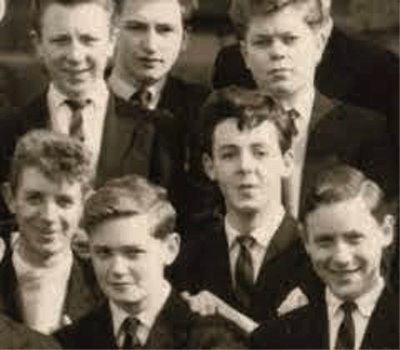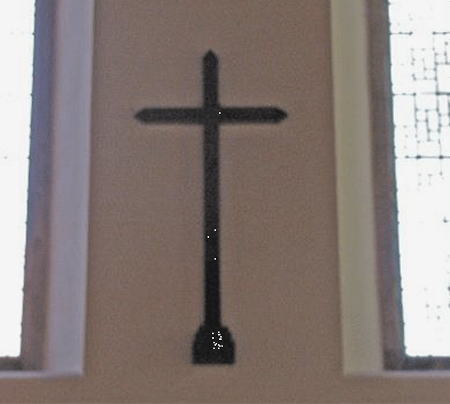Six young men were killed in Keith Doncaster’s bomber, which was lost on a raid by 166 Squadron on Kassel on October 22nd 1943. Keith was the mid-upper gunner in “Z-Zebra”, an Avro Lancaster Mk III with the squadron letters AS-Z and the serial number EE196. The fact that he was engaged in a raid on Kassel does actually establish a rather tenuous link with my own father, Fred Knifton, who, at the time, was with 103 Squadron at Elsham Wolds. My Dad had been involved on the raid on Peenemünde in an effort to prevent the Germans developing the V1 and the V2. All of the participants, in all of their different briefing rooms, were told…..
“If you don’t destroy thr target tonight, you’ll have to go back the following night. And the the night after that and the next night, until the target is destroyed.”
Keith Doncaster’s raid on Kassel was a kind of a follow up to my Dad’s efforts. This time the bombers were after the Fieseler aircraft works which were heavily engaged with developing and manufacturing the guidance gear used to keep both the V1 and the V2 on the right track. And the raid was successful. Kassel was, to all intents and purposes, “flattened”.
The pilot of “Z-Zebra”was Charles Neville Hammond, the son of Thomas Neville Hammond and Doris Hammond from Llanrug in Caernarvonshire, and the husband of Mary Hammond of Odiham in Hampshire. This is Llanrug, a quiet little town:
Charles was 23 years old. He had begun his RAF career as a Leading Aircraftman before receiving an emergency commission. He had previously attended the Liverpool Institute High School for Boys, a grammar school which numbered Paul McCartney and George Harrison among its old boys. What a school photograph this is:

The navigator was Master Sergeant John Murray Walton who was 21 years old. John was serving with the 12th Replacement Control Depot of the USAAF. He was the son of an American couple, Melville R Walton and Mabel Walton although he was born in Ontario in Canada. He was a Canadian citizen by reason of his birth and an American citizen by reason of his parents’ nationality. John had joined the Royal Canadian Air Force but then, like thousands of others, he flew with the RAF. He was the navigator and one of the very few men in World War 2 with a Distinguished Flying Medal, an Air Medal and a Purple Heart:
The bomb aimer was Roy Elkington Ault, the son of Reuben John Ault and Olive Eugenie Ault from Sidcup in Kent, although Roy was born in Stamford in Lincolnshire. He was 22 years old. He too, began as a Leading Aircraftman before receiving an emergency commission. Here’s Stamford, another quiet little town, with all the buildings of that warm yellow-orange colour:

The wireless operator was Edward Ellis Jones, the son of Evan Jones and Mary Ellen Jones. He was born at Ammanford, a tiny community in Carmarthenshire in South Wales. He was the husband of Margaret Jones who lived in Wembley in Middlesex. Edward was 32 years old. He had originally been a sergeant before receiving an emergency commission:
Keith Doncaster, the mid-upper gunner, was 20 years and 5 days old.
The rear gunner was Victor George Deacon, the son of George Victor Deacon and Edith Elizabeth Deacon. Victor came from Brixton in Surrey. Here’s Brixton and a distinctive building Victor might have been familiar with:

Victor was 35 years old and his wife was Lilian Elizabeth Ruskin who lived in Long Eaton in Derbyshire. They had a son called James Deacon. Long Eaton is only three miles from Keith’s house in Sandiacre and Keith had been a member of the Long Eaton Air Training Corps. Did these two young men ever travel home together on leave? Did they visit each other’s families? Did Keith ever look wistfully at little James and wish that he had a son of his own? Long Eaton Air Training Corps are still in business today:

The flight engineer was the only survivor. He was Arthur Iden Pilbeam from Kent. His father, also called Arthur Iden Pilbeam, was a baker and lived at 66 St Mary’s Road in Tunbridge Wells, which I found on that all-seeing google application:

His mother was Mary Pilbeam and his wife was Irene Lilian Pilbeam née Abbott. After being captured, Arthur became Prisoner of War No 261472 at Sagan, then Belaria and finally at Mühlberg (Elbe). After the war he became a fruiterers’ manager and a member of the Worshipful Company of Fruiterers. Arthur lived to a ripe old age, passing away in Chichester in Sussex at the age of 92. Good for him!
Keith’s aircraft had been shot down by a night-fighter, around sixty miles short of Kassel. It crashed at Brakelsiek, roughly 110 miles from Düsseldorf and to the NNW of Kassel. The only survivor, Arthur Pilbeam, has actually supplied an account of what happened. A night-fighter attacked without warning and one wing of the Lancaster burst into flames. The pilot struggled with his damaged controls to give everybody time to escape, but the stricken Lancaster went into a spin after one of the bombs exploded, hit by a cannon shell from the night-fighter. Seconds later, the whole aircraft blew up. Here’s a nice old building in Brakielsk:






























